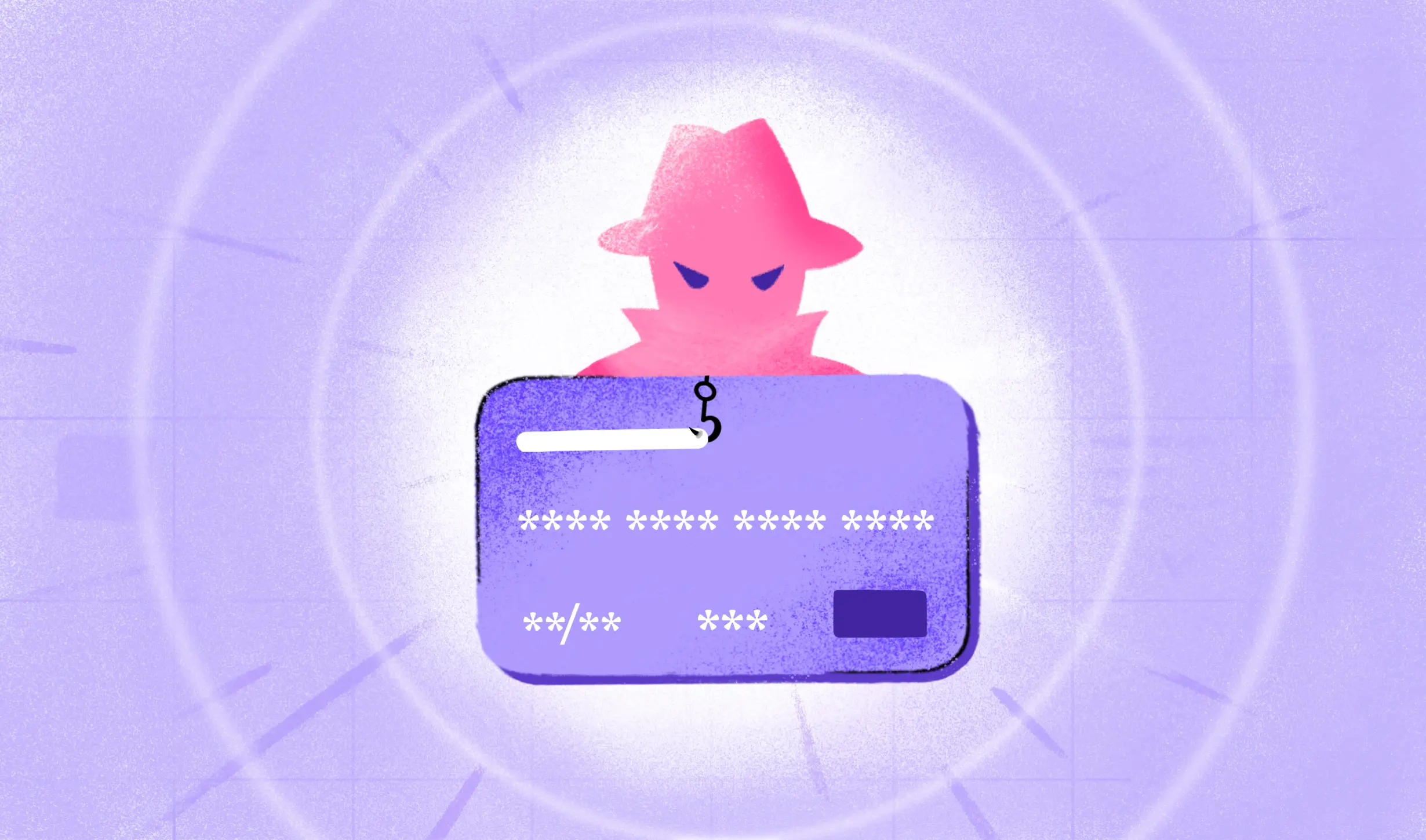The e-commerce industry, already grappling with a staggering $41 billion lost to fraudulent activities in 2022, now faces the daunting challenge of combating triangulation scams estimated to cost merchants worldwide a jaw-dropping $130 billion.
This type of fraud cleverly manipulates the trust between a customer, a fraudster, and a merchant, creating a complex web of deception. Fraudsters harvest payment details through fake marketplaces and then use these stolen credentials to make purchases from legitimate sites, leaving both consumers and businesses vulnerable and exposed.
Let’s delve into the intricacies of triangulation fraud and explore effective strategies to fortify your e-commerce platform against this growing menace.
What is Triangulation Fraud?
Triangulation fraud is a deceptive form of e-commerce fraud involving three parties: the unsuspecting customer, the fraudulent seller, and the legitimate online retailer. In this scheme, a fraudster sets up a fake online store offering attractive products at low prices. When customers buy these items, their payment details are stolen. The fraudster then uses these stolen credit card details to buy similar items from a legitimate retailer, which are sent to the customer, masking the fraud.
This type of fraud not only leads to financial loss but also damages trust in online shopping, making it crucial for both consumers and businesses to understand and guard against it.
How Does Triangulation Fraud Work?
Triangulation fraud unfolds in a multi-step process that exploits both consumers and legitimate e-commerce retailers.
1. Creating a Fake Online Storefront
The fraudster sets up an online shop that appears legitimate, often featuring high-demand products at enticingly low prices. This is designed to lure in unsuspecting customers looking for a good deal.
2. Customers Make a Purchase
When you find these great deals, you purchase items, providing your credit card and personal information during checkout, thinking you’re dealing with a legitimate business.
3. Fraudster Uses Your Credit Card Information
The fraudster then takes your credit card details and uses them to buy the same or similar items from a legitimate e-commerce website. This step is crucial, as it involves using stolen credit card numbers in a transaction with a real retailer.
4. Legitimate Retailer Ships the Item
The real store processes the order, believing it to be a standard purchase, and ships the item directly to you. You may receive your order and have no immediate reason to suspect that your credit card information has been compromised.
5. Multiple Parties Suffer
The end result is that you, the customer, have your credit card information stolen and are at risk of further fraudulent charges. The legitimate retailer faces financial losses and potential damage to their reputation due to chargebacks when the fraud is detected.
To combat such scenarios, it’s essential for ecommerce businesses to implement robust fraud detection techniques. These systems are designed to identify and prevent fraudulent activities, protecting both the business and its customers.
Common Data Points Exploited in Triangulation Fraud
Triangulation fraud occurs when several key data points are exploited. Let’s break down these vulnerabilities, ranging from data breaches to hacked phones, to better understand how they fuel this type of fraud. This knowledge is crucial for protecting both your business and customers from these threats.
Data Breaches
These incidents occur when cybercriminals infiltrate a company’s database, gaining unauthorized access to sensitive customer information, including names, addresses, and credit card numbers. This stolen information can be used or sold to perpetrate triangulation fraud. Ensuring robust security measures, like advanced fraud detection systems, is crucial in preventing such breaches.
Phishing Scams
In these scams, fraudsters impersonate legitimate entities to dupe individuals into providing sensitive data. This might involve emails or texts that appear to be from trusted sources, asking for personal information, which is then used in triangulation fraud.
Account Takeover Fraud
This form of fraud involves hijacking a legitimate customer e-commerce account on a legitimate merchant website. Fraudsters gain access through stolen usernames and passwords, often obtained from data breaches or phishing. Once in control, they can make fraudulent purchases, sometimes using the account holder’s stored payment information.
Stolen Credit Card Details
Stolen credit card data significantly disrupts legitimate e-commerce retailer processes. Fraudsters use these details to make unauthorized purchases, leading to financial losses and complications like chargebacks for retailers. Implementing effective verification methods is crucial to safeguard these legitimate processes from such fraud.
Hacked Phones
As mobile commerce grows, smartphones become a target. Hackers can install malware or use other methods to gain access to a phone, stealing payment information and personal data. This information is then used in various frauds, including triangulation scams.
Each of these data vulnerabilities highlights the need for stringent security measures, such as multi-factor authentication and continuous monitoring of account activities, to protect against triangulation fraud.
How to Identify Triangulation Fraud?
Triangulation fraud can be stealthy, but certain signs can help you spot it. Let’s explore these indicators in detail:
- New Account with Regular Large Purchases: A significant warning sign is a new account making frequent, substantial purchases of the same items. This behavior deviates from typical customer purchasing patterns and may indicate a fraudster repeatedly using stolen credit card information.
- Mismatched Billing and Shipping Details: In triangulation fraud, the fraudster’s shipping address often differs from the credit card’s billing address. Implementing address verification can help identify and investigate such discrepancies.
- Common Items as Targets: Triangulation fraud often involves everyday products, unlike other frauds focusing on expensive or rare items. This strategy helps fraudsters blend in, avoiding immediate suspicion and making detection more challenging.
- Small Groups Using Limited Devices: A typical triangulation fraud scheme is executed by small groups using a few devices. These patterns can be identified through advanced fraud detection systems that track and analyze fraudulent transactions across devices.
How to Prevent Triangulation Fraud With Identity Verification?
A dynamic approach to fraud management is essential in combating triangulation fraud. This involves several layers of identity verification:
Address Verification
Address verification plays a pivotal role in thwarting triangulation fraud. By validating both billing and shipping addresses, businesses can ensure that these details correspond to the legitimate cardholder. This process involves checking the addresses provided against reliable databases to confirm their authenticity.
In cases where the shipping address differs significantly from the billing address, additional verification might be warranted. Implementing robust address verification systems helps identify discrepancies that could indicate fraudulent activity, thus acting as a first line of defense against triangulation fraud. Moreover, regular updates and checks against current databases are essential, as fraudsters often use temporary or falsified addresses to evade detection.
Email Verification
Email verification is another crucial component in detecting and preventing triangulation fraud. This process involves confirming that the email address provided by the customer is valid and actively in use. Email verification can detect if an email is linked to previous fraudulent activities or part of a disposable email service often used by fraudsters. It helps understand customer patterns and identify suspicious activities, such as a high volume of transactions from a new email address.
The key is to integrate this verification seamlessly into the customer experience, ensuring security without compromising on user convenience. Additionally, monitoring email addresses for unusual activities, such as sudden changes in purchase patterns, can provide early warning signs of potential triangulation fraud.
Phone Number Validation
Phone number validation is an effective tool in the arsenal against triangulation fraud. This involves verifying the authenticity of the phone number provided during the transaction. Through phone verification, businesses can confirm that the number is not only valid but also in current use by the rightful owner. This step is crucial in detecting fraud, especially in cases where phone numbers are used as a secondary form of identity verification.
Additionally, phone number validation can be tied to geographic location, helping flag transactions originating from high-risk or unusual locations. Continuous monitoring for irregularities, such as frequent changes in phone numbers associated with a single account, is also vital in detecting and preventing triangulation fraud.
Two-Factor Authentication
Two-factor authentication (2FA) is a powerful method to enhance security and prevent triangulation fraud. By requiring a second verification form, such as a code sent to the user’s phone or email, 2FA ensures that the person initiating the transaction is the cardholder. This added layer of security is especially important in online transactions where the physical card is not present.
Implementing multi-factor authentication can significantly reduce the risk of unauthorized use of stolen credit card information. It also serves as a deterrent to fraudsters, as the complexity of bypassing 2FA is significantly higher. Regularly updating and auditing the 2FA system is crucial to maintain its effectiveness, as fraudsters continually evolve their tactics to circumvent security measures.
Related reads:
- A definitive guide to digital identity verification
- How to choose an identity verification solution
Conclusion
In conclusion, understanding and combating triangulation fraud is crucial in today’s digital marketplace. Businesses must adopt a proactive approach, incorporating multiple layers of verification such as address, email, and phone number validation, alongside robust two-factor authentication. These strategies not only protect against triangulation fraud but also enhance overall security and customer trust.
At HyperVerge, we understand these challenges and offer cutting-edge solutions tailored to your needs. Whether it’s through advanced fraud detection techniques or comprehensive address verification, our commitment is to safeguard your business against these sophisticated fraud tactics.
To see how we can help protect your business from triangulation fraud and other security threats, book a demo with us.

 US
US
 IN
IN









